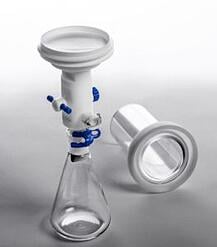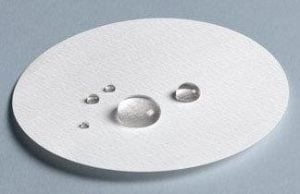Working in an environmental lab requires a lot of concentration, both mentally and for the samples that you are working with. When New England finally begins to thaw and local companies rush to get their samples completed, a bottleneck that is usually experienced is the drying and concentration of so many samples.
This bottleneck is partly due to ensuring that samples are extracted within their holding times. There have been many times I have had to multitask while concentrating samples on the TurboVap® classic, leading to some extra work when that rare sample was overconcentrated. Many of my past coworkers brought up the challenge they faced with the extraction of water and soils. In my opinion, the bigger issue was drying and concentrating. My main complaint with these steps was it was never efficient enough and I always had to baby each step so that all of my hard work (shaking the sample) did not go to waste. What I strived for most in the lab was an efficient and streamlined workflow for this part of the process.
Since coming to Biotage®, I have been exposed to new solutions and workflows for drying and concentrating. I’ve been in awe of how much of an afterthought the drying and concentrating of extracts has become for me. For example, traditionally, extract drying would be performed by taking glass funnels, stuffing some glass wool in them, adding some sodium sulfate into that funnel (that had to be baked out for hours to ensure its cleanliness), and finally draining the sample extract through that setup. It took a lot of time to set this up, and even more problematic, there never were enough glass funnels, which then required extensive cleaning, when I needed them most. Within a few months in my role as an application chemist, I have been exposed to new ways to dry and concentrate extracts.
Drying
One workflow I was introduced to was Solvent Drying System (SDS) and DryDisk® separation membranes. This workflow for drying samples has been turnkey when compared to my past experience with drying samples. With this solution, there is no worry that the DryDisk® will be oversaturated by residual water or emulsions that may come along with the sample extract. No longer do I need to carefully pour my extract to avoid oversaturating the sodium sulfate, causing water breakthrough into my extract. I can just pour my entire extract into the DryDisk reservoir and let the SDS do its job. This has
DryDisk® separation membranes. This workflow for drying samples has been turnkey when compared to my past experience with drying samples. With this solution, there is no worry that the DryDisk® will be oversaturated by residual water or emulsions that may come along with the sample extract. No longer do I need to carefully pour my extract to avoid oversaturating the sodium sulfate, causing water breakthrough into my extract. I can just pour my entire extract into the DryDisk reservoir and let the SDS do its job. This has been very effective with dirty and clean samples which have made this process more efficient. Another great feature to improve productivity is that you may hook up to eight separate SDS to a single vacuum manifold. This allows the extractions lab to cruise through the sample drying process.
been very effective with dirty and clean samples which have made this process more efficient. Another great feature to improve productivity is that you may hook up to eight separate SDS to a single vacuum manifold. This allows the extractions lab to cruise through the sample drying process.
Concentrating
Since working with the Biotage® TurboVap® II, it has made my life a lot easier when concentrating extracts. The redesigned sensors allow me to focus on other tasks without any worries whatsoever which would have been a wonderful feature when I had to balance sample prep and analysis at the same time. The ramping feature was not on my old TurboVap classic and has been very effective in automatically turning up the nitrogen pressure throughout the concentration process, allowing me to save more time to focus on other tasks.
For a number of EPA methods, this workflow solution has been great allowing me to juggle my responsibilities more efficiently. All in all, the Biotage® workflow solutions for manual drying and concentrating have made my time in the prep lab much more efficient and have left me wishing I had options like these during my many prior years at an environmental testing lab.
For more information, view my overview on Biotage evaporation and concentration systems on the basics of solvent drying.

 Organic Workflow
Organic Workflow Peptide Workflow
Peptide Workflow Scale-Up Flash Purification
Scale-Up Flash Purification  Sample Preparation
Sample Preparation Biomolecule Purification
Biomolecule Purification Oligo synthesis
Oligo synthesis Scavengers and Reagents
Scavengers and Reagents Service & Support
Service & Support Accessories & Spare parts
Accessories & Spare parts Investors
Investors Reports & News
Reports & News The Share
The Share Corporate Governance
Corporate Governance Calendar
Calendar Sustainability
Sustainability Our Offering
Our Offering Our History
Our History Our Locations
Our Locations Leadership
Leadership